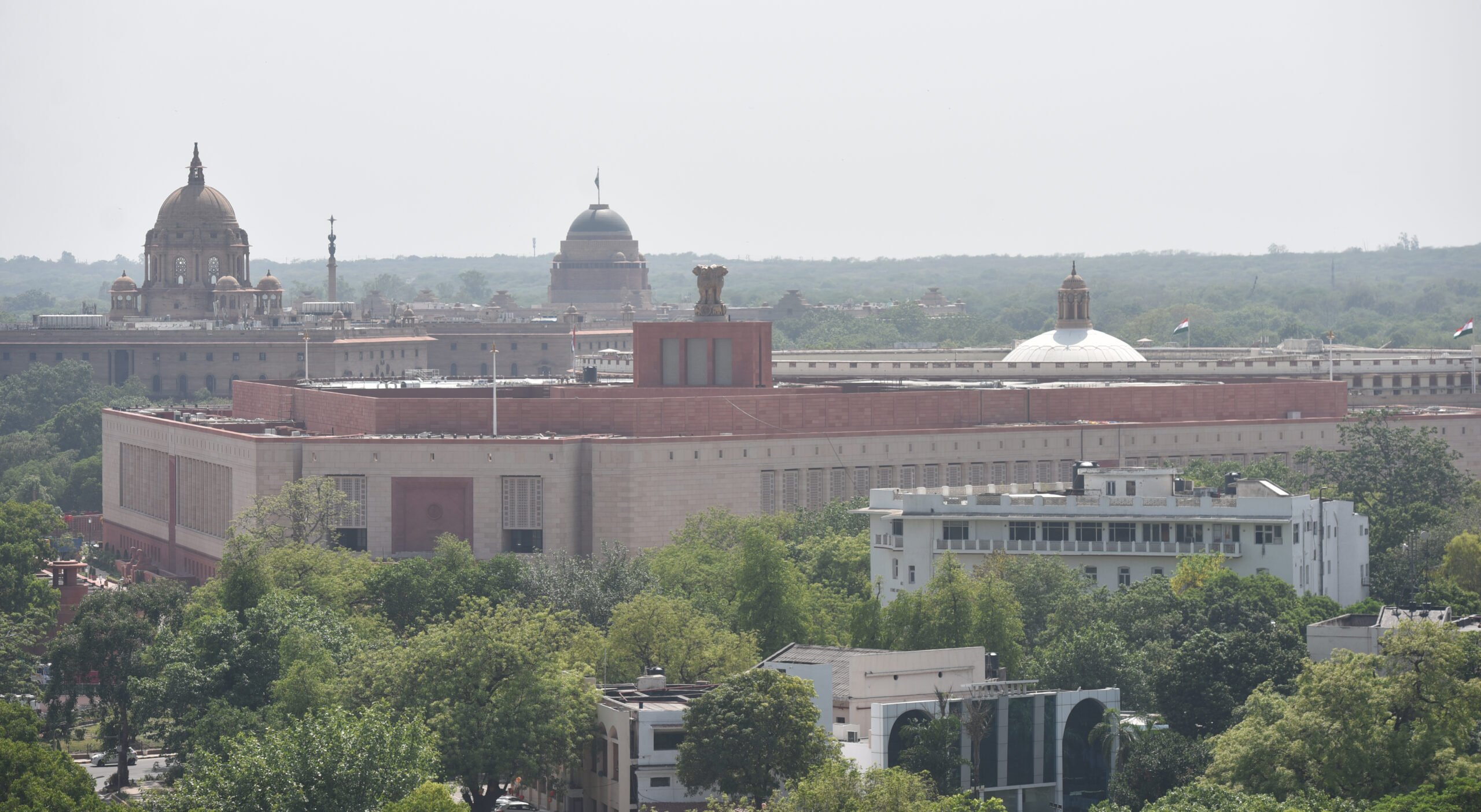
SHORT TIME: The new Parliament House was built in 30 months as against the Raj-era Parliament House which took six years, from 1921 to 1927 PHOTOS: GETTY
Not far from the newly-built Parliament house, Surinder Ratawal, a cabinet minister in Madan Lal Khurana’s Delhi government of 1993, was talking to his family about the making of of Herbert Baker-designed Parliament House (earlier known as Council house). The new building is just at a shouting distance from that one inaugurated by Viceroy Lord Irwin on January 18, 1927.
Well, Ratawal has reason to discuss it as his grandfather and other family members came from Bharatpur in Rajasthan to build it. They were among the hundreds of unknown and faceless labourers who came to Delhi on foot to build the series of buildings, including the Parliament House, that were coming up in 1920s.
“Alas, they are footnotes in the history of New Delhi. My forefathers had spent their blood, sweat, tear and toil in order to build the behemoth i.e. the Parliament House,” says Ratawal, 72, who was also the President of Kirori Mal College students Union in 1971.
Cut to now, hundreds of workers were on the job day and night to build the new Parliament House. They were working even when the deadly second wave of Corona was devastating everything. When Delhi and the entire nation was confined to homes, their work progressed without break.
However, this time modern machines too were used in building the Parliament which allowed it to be completed in less than 30 months. The construction of the first Parliament building took six years – from 1921 to 1927.
Thanks to several factors, the new Parliament house was built faster. This was possible as the construction industry is changing rapidly, and new materials and technologies are being introduced on a regular basis. Execution of construction projects and their timely delivery has become a prime concern for the builders.
Pre-fabricated or off-site construction, which is the practice of assembling a variety of components of a structure at a manufacturing site and transporting them to the construction job site to be assembled, has changed the face of construction. Today’s is a mass produced mode of construction. It requires meticulous planning and detailing as well as a greater eye for quality and precision.
Where did they come from?
Machines apart, thousands of workers had descended in the Capital to complete various projects related to Central Vista.
Surely, they will remain here even after completing the projects assigned to them. This has been the trend since the 1982 Asiad when workers mostly from Bihar came here and settled down.
The number of workers from Bihar has gone down drastically this time and it is the labour of workers mainly from West Bengal, Jharkhand and Odisha that built the new Parliament House brick by brick.
They were all employed by the contractor on a monthly salary of Rs 15,000, two meals a day and medical facilities. Some of them were skilled like plumbers and electricians, and unsurprisingly, they got a little more salary. After their work was finished, they moved to other sites, including Pragati Maidan and Minto Road.
All with hands
Back in the day when the ‘old’ Parliament House was being built on Raisina Hills by workers mainly from Bharatpur, Dholpur and Jaipur, machines were not there. The labourers used heavy stones of Dholpur manfully to create a magical building.
And it was Lachhman Das, a builder from Sindh (now in Pakistan), who built the Parliament House. Khushwant Singh, in his essay ‘Romance of New Delhi’, describes him as a scrupulously honest man who did not use cheap material, paid his workers on time and didn’t cheat on taxes. He adds that his honesty was his undoing. Lachhman Das retired to Haridwar, where he spent his last days as a Sadhu.
This approval from Khushwant Singh means a lot since the celebrated author was not so kind even to his father, Sir Sobha Singh.
Ratawal says that those who came to build the British-era Parliament House were getting Re 1 per day and their wives were paid 60 paise daily if they too were working.
“Lachhman Das used to spend time with workers and looked after their interests like a father of the family. He was a very Godfearing character,” says Ratawal, who heard about him from his elders. The workers were given small plots to live in the Karol Bagh area. Meanwhile, if workers were from mainly Rajasthan, the artisans were from mainly Agra and Mirzapur. They were experts on creating jaalis and jharokas on stones. Their forefathers had worked on constructing Jama Masjid and Red Fort.
So, when you see either the new or old Parliament House, spare a thought for all those unknown workers who built it.
Rival leagues trigger players’ suspensions and a legal battle in Indian golf, for now
Former Delhi CM Kejriwal criticises Centre, Delhi govt over worsening air pollution, alleges AQI manipulation
Delhi Police raids Nangloi unit producing fake engine oil, seizes over Rs 1 crore worth…
Mukesh Sharma reimagines digital components as living matter in his solo exhibition ‘Decoding Digital DNA’
Nine accused were arrested in coordinated raids as police uncovered organised networks supplying mule bank…
Nearly 1.57 lakh PUC challans issued in two months as Delhi steps up GRAP enforcement…